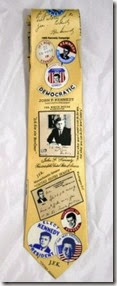For a number of years now, The New Yorker has run a Cartoon Caption Contest on its last page.
Each week, a new, captionless cartoon is presented, and readers can propose a caption. The three captions deemed most worthy by New Yorker staff are then voted on by the general, New Yorker reading public, and the winner gets a signed print of the cartoon.
Probably because I’m not especially clever when it comes to cartoon captioning, I’m not a huge fan of the Caption Contest. (This, by the way, is not sour grapes, and has absolutely nothing whatsoever to do with the fact that, the one and only time that I did enter a caption – something about the Jolly Green Giant – I didn’t make the cut.
I was not surprised – my caption, now lost to memory, was not particularly witty and, I suppose, was pretty obvious – but I was, nonetheless, disappointed not to see my name in what would probably have been the only time it would have appeared in The New Yorker.
My disappointment was nowhere near as keen as what I experienced in kindergarten, when I sent a brilliantly conceived and executed crayon drawing of a bunny rabbit in clover in to Miss Francis on Ding Dong School. Each day, Miss Francis chose some drawings to display, and each day I chugged back home to ask my mother and brother Tom whether my drawing had been on.
The answer, sadly, was always “No.”
Why my mother didn’t just say “Yes” will be obvious to anyone who knew my mother. But it was probably just as well.
I would have been a tremendous braggart if Miss Francis had, indeed, shown “Bunny in Clover,” and I would no doubt have been challenged with taunts of “liar, liar, pants on fire.” If my mother had fibbed to get me out of her hair, there would no doubt have been one kid whose mother and sibs had been watching the day I claimed my fame, and I would have been outed. (Liar, liar confirmed!)
I do know, however, that, even after the initial spell of braggadocio had died down, this tremendous feat would have been referred to, again and again, throughout my grammar school career. After all, wasn’t there always someone ready to bring up the fact that Arthur Godfrey had read Mary Shea’s query letter on his show. Mary wanted to know just what made Haleloke’s belly wiggle. (Hale was Arthur’s Hawaiian singer and hula dancer.)
A few years after the Ding Dong School dis, I did garner a bit of notoriety when I won honorable mention in one of Big Brother Bob Emery’s curlicue contests. (I turned that curlicue into a person in a wheelchair, which no doubt struck at the heart of some staffer who knew a kid with polio. Anyway, my prize was a Huckleberry Hound Carbon Copy Kit, which contained colored carbon paper and some Huckleberry Hound cartoons to trace. Even at the age of nine, I thought that a prize focused on tracing was not especially appropriate for someone who’d almost won an art contest. Sheesh. Shouldn’t they have sent me an easel and oils? A smock and a beret?)
Back to The New Yorker, my friend Claire did make the Final Three at one point but, despite my vote, she didn’t win. Sometimes I really hate vox populi, but I guess the voting is all about “reader engagement.”
Despite my poorly-received entry, and my friend Claire’s brush with fame, I hadn’t paid all that much attention to the actual New Yorker Caption Contest rules.
But the other day, I noticed this:
Any legal resident of the United States or Canada (except residents of the province of Quebec), Australia, United Kingdom and the Republic of Ireland, age eighteen or over can enter [or vote], except employees, agents, or representatives of Sponsor or any other party associated with the development or administration of the Contest, or any member of their immediate family.
I certainly understand why those Sponsors and Contest administrators would not be eligible. Why tempt fate? Everyone’s mother wouldn’t be as honest as mine.
But residents of Quebec?
Comment dites-vous ‘abomination’?
I mean, what if your name is Reginald Pinch Smythe, and you happen to be an Anglophone resident of Montreal, and you also happen to be a really, really, really good cartoon captioner?
Do you cheat and drive to the nearest province border and mail your entry in from there. (And make sure that you have a PO Box set up in Newfoundland or Ontario.)
And what about New Zealanders? Are their comic sensibilities any less than those of their Aussie brethren?
What about ex-pats, who are citizens but not residents? How come they can’t play?
A lot of people in India speak English, no? And Singapore, and Hong Kong. Plenty of countries in Africa.
Was The New Yorker Caption Contest always such a stickler about who entered? Were they initially overwhelmed by submissions from “foreigners” whose English was not quite up to par, and whose sense of humor was just on a different wave length? Was there such a rush of bad entries that they couldn’t just toss out the ones they suspected would not be of interest without even opening them? I really don’t think it would have dawned on anyone to ask why there were never any winners from Lichtenstein (other than the Lichtensteiner who kept sending captions in.)
Anyway, since I noticed this about The New Yorker, the question just won’t leave my mind.
What does it all mean? How can it possibly be right?
You know what they say. The unexamined life is not worth living, and sometimes you do have to ask the BIG questions.





